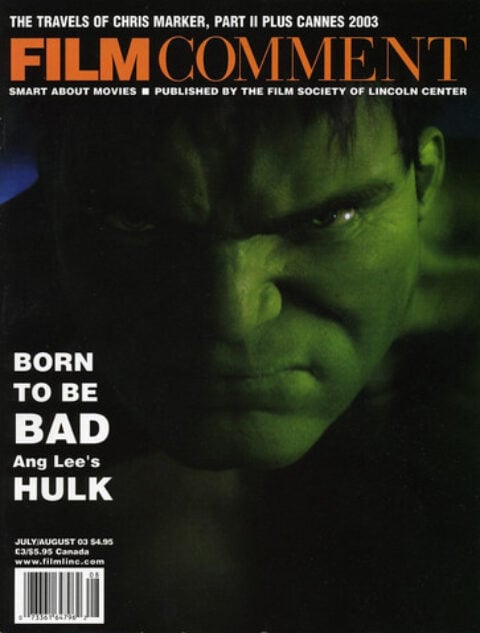
I will admit that I have yet to explore every corner and crevice of Chris Marker's Immemory. I suspect that any fan would make the same guiltless admission. After you've browsed through Marker's first CD-ROM, you will want to leave areas of it unexplored. That way, you can extend your relationship with this precious object long past the point that you've thrown other relics of the all-but-obsolete medium into your deepest desk drawer. Without apparent effort, Marker pulls off a remarkable feat: like Proust before him, he creates a template for the workings of memory itself as he's charting his own interior landscape. “My fondest wish,” he writes in the jacket introduction to Exact Change's English edition, “is that·my Immemory should serve as a springboard for [the reader-visitor's own] pilgrimage in Time Regained.” And so it does. Sympathetic users will feel their entire lives passing before them, the oceanic vastness of their pasts and the great unattainable object of Ultimate Knowledge forever on their collective horizon. “It's banal to say that memory misleads, and more intriguing to see its lies as a form of natural protection that one can govern and shape at will,” writes Marker somewhere in the middle of Immemory (is there anywhere else but the middle?). “Sometimes that's called art.” I'll say. And sometimes, less often, it's the substance of art. Proust and Vertigo (Marker's Portals of the Past). Resnais. Welles. Miles Davis. Chris Marker.
There's a hilarious interview with Brian Eno on the subject of CD-ROMs, included as an appendix in his published diary, a book that would surely please Marker. “There is not one CD-ROM I can think of that I would ever want to look at again,” he says. “They are so tedious because they rely on this idea that you can move huge blocks of data around.” Later: “Only people who have nothing else to do actually find it interesting to go and look at bloody pictures on a computer.” He suggests a more interesting alternative, based on the idea of the screensaver. “What I want to suggest is that CD-ROM is the vehicle by which you plant all these seeds in the computer and it grows them.”
Although Immemory is guilty of following Eno's negative model—the user is indeed navigating his/her way through huge blocks of data—it also seems to me a rather eccentric prototype of his positive model. Marker immediately gets past the boring, static aspect of the medium. He assembles his postcards, photographs, cherished objects, film stills and clips, written commentaries, quotes, designs, superimpositions, collages, and musical passages within a structure that endows them with an afterlife. Like actual memories, they feel permanent and elusive at the same time. They invite you to keep looking. Many seeds are planted. They grow not in the computer but in the mind of the user.
There is no proper beginning or end to Immemory. We start with an introductory map, which gives us eight different zones: Travel, Museum, Memory, X Plugs, Poetry, War, Photography, Cinema, all grouped around the center, the unclickable zone of Immemory. Far from exhaustive histories of the various topics, they are clusters of impressions and sensations around said topics, as experienced by the man who named himself Chris Marker. As we enter any given zone, we navigate with a cursor in the shape of a solid circle over a cross. When the cursor changes color, that means there's a tangent to follow; when the the circle becomes transparent (suggesting the crosshairs of a camera, or a gun), there is yet another addendum/clarification/appendage to pursue, or not. Sometimes, the cursor becomes an eye; sometimes a yellow ball in a black square pops alive at the bottom of the screen with a ping—further “bifurcations.” Moreover, sweeping the cursor across the screen often reveals a line of text, of which two or three words sometimes appear in negative, signaling yet another portal within a portal. In short, what appears to be a finite experience, if not a linear narrative, never is, largely due to the author's keen understanding of the rhythm of attention.
For me, the most thrilling aspect of Immemory is its ingenious use of the very finitude that Eno despises, endemic to the whole idea of the CD-ROM. You are indeed going over the same blocks of data every time you pop Immemory into your computer. Just as you keep going over the same memories and snatches of experience in your head, over and over, for a lifetime. Those constant, scintillating bifurcations strike me as perfect models of the little sounds and sensations that break up your train of thought: just when you think you're going down a straight, clear path, you veer off to the side and drift through another portal. Even the route back to the original map, the red arrow pointing up at the top center of the frame, feels emblematic of consciousness. Marker knows that the closer we think we've gotten to heaven, the greater the likelihood that we're back home.








